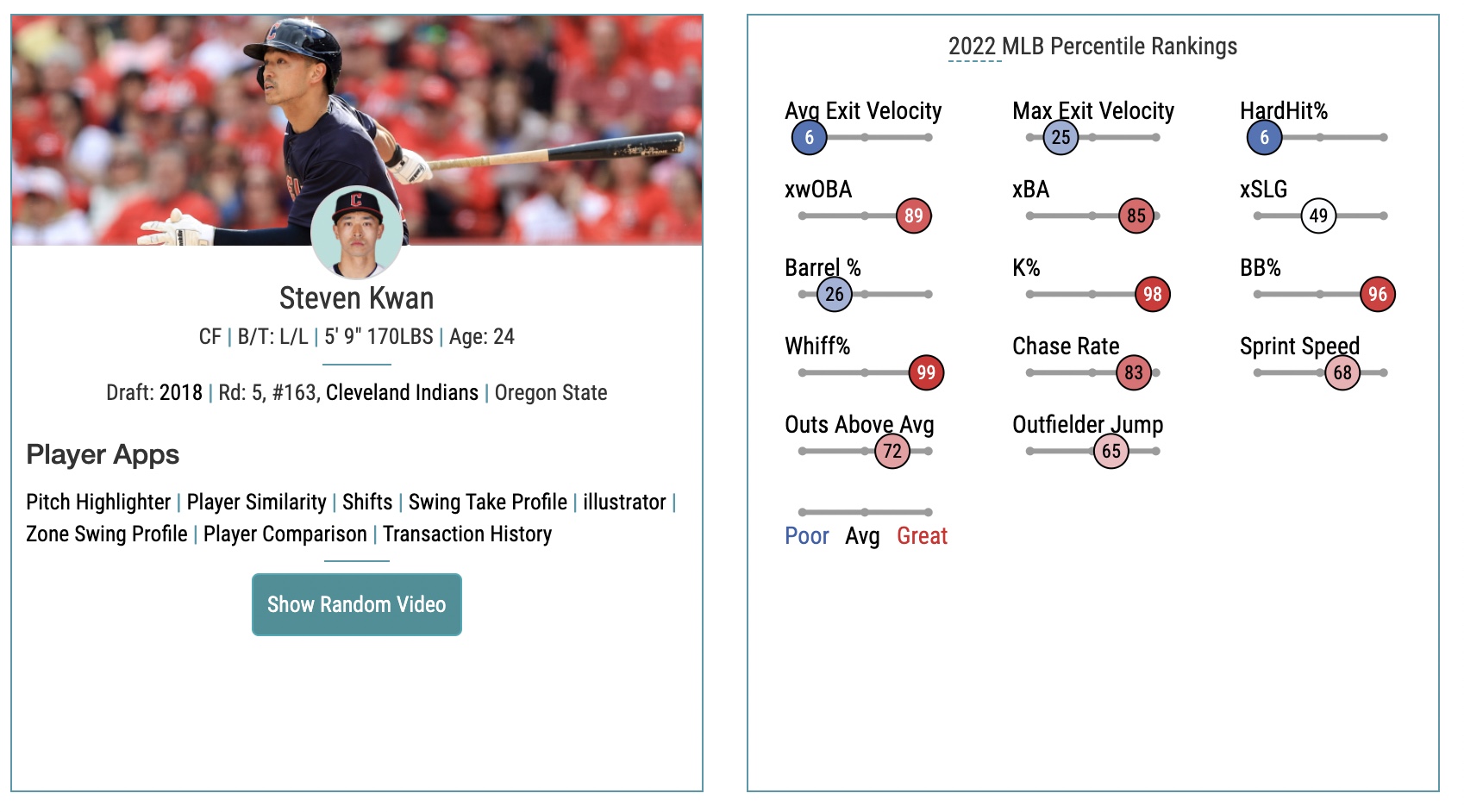We’re 10 days into the MLB season and the urge to take conclusory victory laps is too strong for the impulsive to resist. Surely this is an insufficient sample to draw a binary conclusion upon, right? A more discriminate mind should patiently wait for enough data points to even attempt to interpret future value, right? Yes, of course.
But the fantasy baseball community does not have the luxury of patience as we compete against our peers overreacting to each box score as if the next Juan (Kwan?) Soto is sitting on our wire.
I am here to assuage your consternation on The Legitmus Test where I determine the legitimacy of these breakouts—dropping a dollop of truth onto the page to prognosticate whether recent booms are indicative of future success.
Now let’s get a few pitches in before we get the hook from Dave Roberts or witness Joe Maddon give Corey Seager the Bonds treatment.
Mike Trout realizing they just walked Seager with the bases loaded pic.twitter.com/tH18Ccg4Tr
— Ben Porter (@Ben13Porter) April 16, 2022
Tylor Megill’s prospect background is not the stuff of (Ty)lore. As a relatively unheralded eighth-round pick out of Arizona with an ERA over four in his 2018 draft year – Megill wasn’t exactly a shoo-in for the Opening Day starter role he took just four years later.
So what catapulted Megill into the lead of a breakout analysis?

Yup, that’ll raise some eyebrows. With 10.1 IP scoreless, over a K/IP, and zero BBs through two road matchups—including one against a high-end Philly lineup—it is obvious why Megill is turning some heads. Now if only there was something under the hood to explain such a rapid shift in results.

Wow, significant increases in velocity across his pitches, highlighted by a fastball that gained almost two MPH, a slider that now dips an extra four inches, and a changeup that went from 85 to 90—this is clearly a changed pitcher. Now the picture of a breakout is becoming a little clearer.
In interviews, Megill has expounded on the changes he made describing how he simplified his delivery this offseason to better utilize his monstrous 6’7 frame. He maximizes the power of his height with a 7.3 release extension which dwarves the 6.5 average release extension of the average MLB pitcher. This allows him to produce greater effective velocity as the batter has less time to react to a rapidly incoming fastball hurled by a 6’7 behemoth. This has led to a whiff rate increase from 21 to 27% on his fastball.
His slider is also significantly changed with a slightly higher spin rate, over four inches of additional vertical movement, and a slight 0.5 mph increase in velocity. He has thrown only 22 sliders on the season yet has produced five strikeouts and an absurd 66.7% whiff rate on the pitch. The whiff rate won’t hold but this pitch should continue to be the source of befuddlement for batters when paired with his fastball.
Megill’s changeup has sacrificed some vertical drop for more run and an increase to 90 MPH from last year’s 85. With each of his primary pitches significantly altered, Megill now has a flummoxing mix of three above-average pitches to skewer a given hitter.
With the groundwork now laid, let’s take a peek at the tape.
5.1 scoreless tonight from Tylor Megill.
10.1 scoreless innings to start the season. pic.twitter.com/gELxQhx9vP
— SNY (@SNYtv) April 13, 2022
Tylor has been given the nickname Big Drip by his teammates and if it weren’t obvious from the metrics, the video should drive the point home – Megill’s improved repertoire has been unhittable in the early season.
With elite early results, significant increases in Megill’s velocity, and a background story that echoes the changes we are seeing in his profile this is a breakout that is hard to dispute. As long as Megill can maintain the velocity changes he is showing he should be a season-long asset establishing himself as one of the biggest breakout pitchers of the year.
Buy your shirts folks – it is Easter weekend and the Tylord has risen. Verdict:
LEGIT
Steven Kwan is a visionary. His vision and bat control at the plate has led to some eye-popping early season results.

Kwan’s sudden stardom represents a fascinating paradigm shift for the sport. Kwan is the polar opposite to the new-age, three true outcome players like Joey Gallo who will routinely find themselves either striking out, walking, or hitting home runs. This trend is maligned by old school baseball fans who place greater value on putting the ball in play, choking up with two strikes, and avoiding a strikeout as if it were a new COVID strain. In Kwan, they may have found their savior.
Kwan did not strike out through all of Spring Training and carried this into the regular season, amassing 47 at-bats without a K this year. Even more impressive, Kwan saw 116 MLB pitches before he swung and missed—which was a mere technicality as this occurred on a foul tip caught by the catcher.
https://gfycat.com/bigheartedseriousechidna-brad-pitt-moneyball-baseball
The Kwan meme-ing hit warp speed as nicknames like Obi Kwan, Kwan song, and Kwan Soto have been bandied about as fantasy players have scurried to the waiver wire to pick up this new rare breakout profile making jealous wishers of all of their league mates. But, has this hype train gone off the rails?
Glaringly, Kwan’s lack of home run power and stolen base prowess across his minor league career should be cause for concern for anyone buying high on Kwan’s profile. Projections have him ranging anywhere from 13-20 HRs and SBs combined. As of today, he has zero despite his scintillating and obviously unsustainable start.
Last year across AA and AAA, Kwan amassed 12 HRs and six SBs which represented a significant improvement from his three-HR and 11-SB 2019. Naturally, while hitting in the two spot without significant power in what was projected to be a below-average lineup, this will cap his RBI totals. So altogether you’re looking at an asset that will likely hurt you in the HR and RBI categories while providing somewhere between below-average to marginal value in the SB category. So all told, you’re looking at an AVG/OBP specific asset where you’d be hoping on the volatility of Runs to truly provide value to your fantasy teams. Such an extreme profile leaves little room for error and little room to dream on a league-winning type ceiling.
Let’s see if his savant profile echoes these sentiments.

Now it should go without saying that Statcast data on such a limited sample should be properly qualified but Kwan’s profile is so extreme that everything above is directly mirrored in his profile. As elite as he is at putting the ball in play, he is equally as bad at doing it with power as demonstrated by his sixth-percentile average exit velocity.
But fantasy managers love Kwan for one thing:
https://gfycat.com/paleunripedamselfly
Kwan’s on-base skills are well proven through his minor league data both through getting hits and taking walks. Don’t let my above chilling dull the shine on this. Kwan could realistically finish the year around a .300 AVG with an OBP potentially north of .350. Such a season could give him some Rookie of the Year hype. If you’re by chance in a league that places a negative value on Ks then you can boost Kwan appropriately, but for most of us in standard leagues this benefit may only marginally outweigh his above deficiencies.
None of these mitigating factors should keep you from valuing Kwan in a dynasty league however as we have seen hitters of this ilk develop the power and or stolen base prowess to be true 5 category producers. One oft-referenced comp for Kwan is Michael Brantley:

Brantley’s early career comps very closely to what we may expect out of the 24-year-old Kwan, albeit Kwan should have a higher BB% given he has hovered around 10% through his minor league career. As you can see, Brantley continued to evolve both as a power hitter and stolen base artist up through his career-best age-27 season. This would be a fantastic outcome for Kwan’s next few years. Obviously, not everyone has the same work ethic, drive, and consistency Brantley continues to demonstrate with the Astros but these comparisons can help illuminate what we can realistically dream of for Kwan’s future profile.
All told, if you can sell high on Kwan, do it. Personally, I would target buy lows like Jorge Soler or Jesse Winker – hell I wouldn’t be shocked if you could pull off a Kwan for Joey Gallo classic buy-low sell-high given the right league mates. I’ve seen him swapped for Lourdes Gurriel Jr. in a few leagues which I fully endorse.
The fact is Kwan has been the darling of the early MLB season and his .400 BABIP is obviously unsustainable, coupled with the fact that he’s validated the power/speed fears by registering a goose egg in HR and SB so far.
Kwan’s breakout is a wonderful story, his vision and slap-hitting skillset is legitimate and he will be fascinating to follow as he develops. He is worthy of a roster spot in 12-team leagues but the ceiling is too low and the hype has gone too far. This is a marginal category-specific niche asset that is being touted as baseball’s biggest breakout. Thus, relative to the value his hype has offered him, Kwan is a prime sell-high candidate and thus this breakout must be deemed:
NOT LEGIT
Featured image by Justin Paradis (JustParaDesigns on Twitter)

